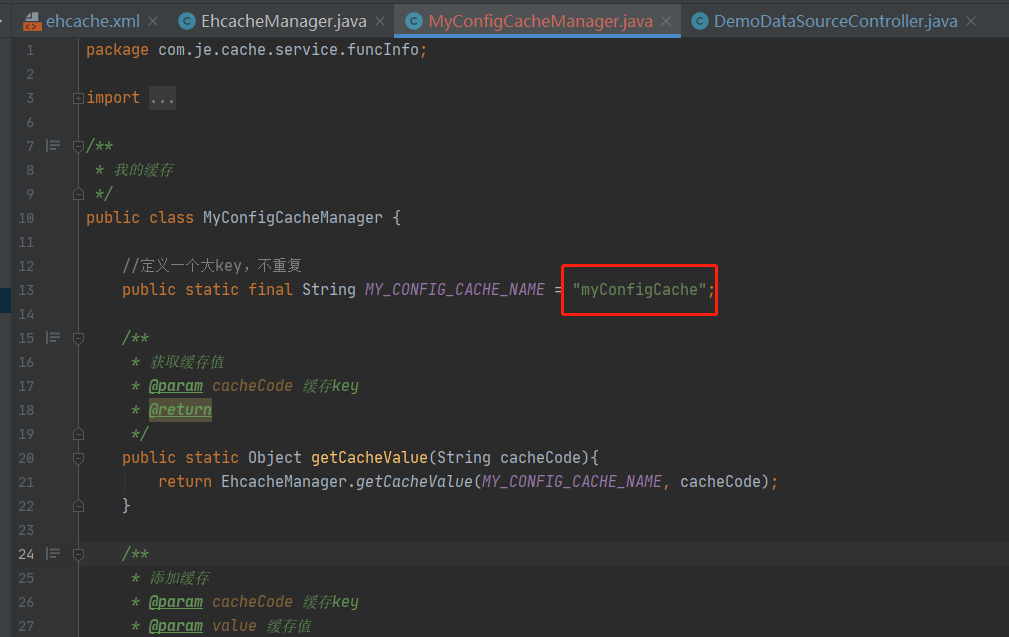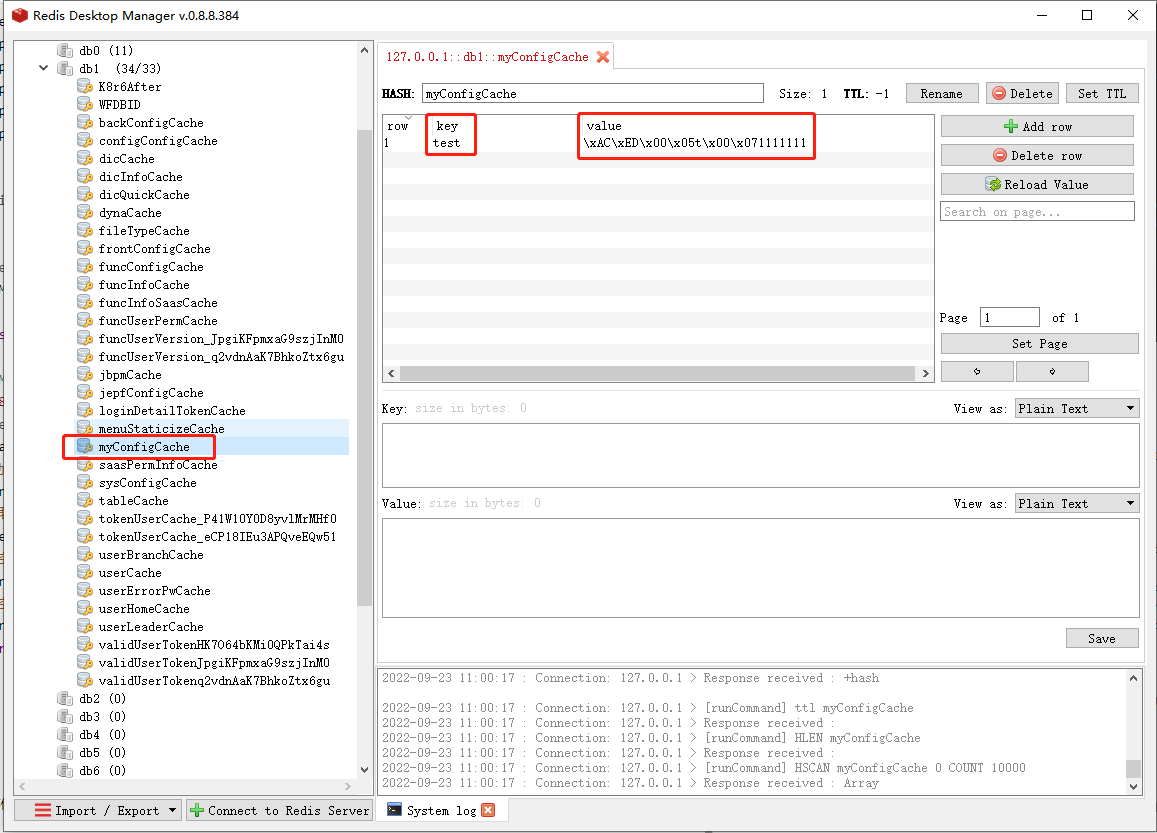案例描述
添加自定义缓存
实现思路
添加自定义缓存
将缓存加入到配置文件
使用自定义缓存
操作步骤
1. 创建自定义缓存MyConfigCacheManager
package com.je.cache.service.funcInfo;
import com.je.cache.service.EhcacheManager;
import java.util.Map;
/**
* 我的缓存
*/
public class MyConfigCacheManager {
//定义一个大key,不重复
public static final String MY_CONFIG_CACHE_NAME = "myConfigCache";
/**
* 获取缓存值
* @param cacheCode 缓存key
* @return
*/
public static Object getCacheValue(String cacheCode){
return EhcacheManager.getCacheValue(MY_CONFIG_CACHE_NAME, cacheCode);
}
/**
* 添加缓存
* @param cacheCode 缓存key
* @param value 缓存值
*/
public static void putCache(String cacheCode,Object value){
EhcacheManager.putCache(MY_CONFIG_CACHE_NAME, cacheCode, value);
}
/**
* 清空所有缓存
*/
public static void clearAllCache(){
EhcacheManager.clearAllCache(MY_CONFIG_CACHE_NAME);
}
/**
* 清空指定的缓存
* @param cacheCode 缓存key
*/
public static void removeCache(String cacheCode){
EhcacheManager.removeCache(MY_CONFIG_CACHE_NAME, cacheCode);
}
}
2. 将缓存加入到配置文件
打开public文件夹ehcache.xml,添加自定义缓存
<!-- 自定义缓存 -->
<cache name="myConfigCache"
maxElementsInMemory="10000"
maxElementsOnDisk="1000000"
eternal="true"
overflowToDisk="false"
diskSpoolBufferSizeMB="10"
timeToIdleSeconds="0"
timeToLiveSeconds="0"
diskPersistent="false"
memoryStoreEvictionPolicy="LFU"
useCluster="true"
clusterPut="true"
useOneLevelCache="true"
clusterRemove="true"
clusterRemoveAll="true"
useTwoLevelCache="true"
twoLevelCacheType="redis"
commonRedisCache="false"
commonRedisTimeOut="604800">
<BootstrapCacheLoaderFactory class="net.sf.ehcache.store.SecondLevelStoreBootstrapCacheLoaderFactory"
properties="bootstrapAsynchronously=false"/>
</cache>

3. 使用自定义缓存
package com.project.demo.controller;
import com.je.cache.service.funcInfo.MyConfigCacheManager;
import com.je.core.base.MethodArgument;
import com.je.core.controller.PlatformController;
import com.je.core.result.BaseRespResult;
import com.je.core.service.MetaService;
import org.springframework.beans.factory.annotation.Autowired;
import org.springframework.stereotype.Controller;
import org.springframework.web.bind.annotation.RequestMapping;
import org.springframework.web.bind.annotation.RequestMethod;
import org.springframework.web.bind.annotation.ResponseBody;
@Controller
@RequestMapping(value = "/je/demo/chache")
public class DemoDataSourceController extends PlatformController {
@Autowired
private MetaService metaService;
private static final String CACHE_KEY = "test";
@RequestMapping(value = {"/test"}, method = {RequestMethod.GET}, produces = {"application/json; charset=utf-8"})
@ResponseBody
public BaseRespResult doSave(MethodArgument param) {
//添加缓存
MyConfigCacheManager.putCache(CACHE_KEY, "1111111");
//获取缓存
System.out.println(MyConfigCacheManager.getCacheValue(CACHE_KEY));
//清空指定缓存
MyConfigCacheManager.removeCache(CACHE_KEY);
//清空该缓存下的所有缓存值
MyConfigCacheManager.clearAllCache();
return null;
}
}
对应redis中存储效果
最后编辑: 于春辉 文档更新时间: 2025-05-23 14:31 作者:于春辉
